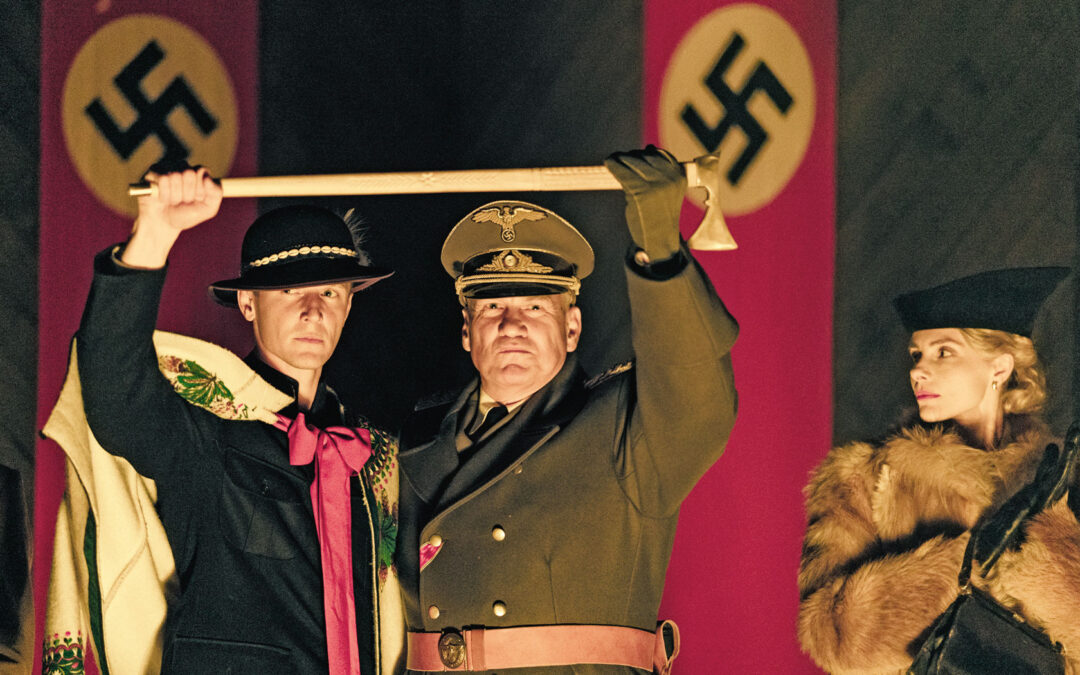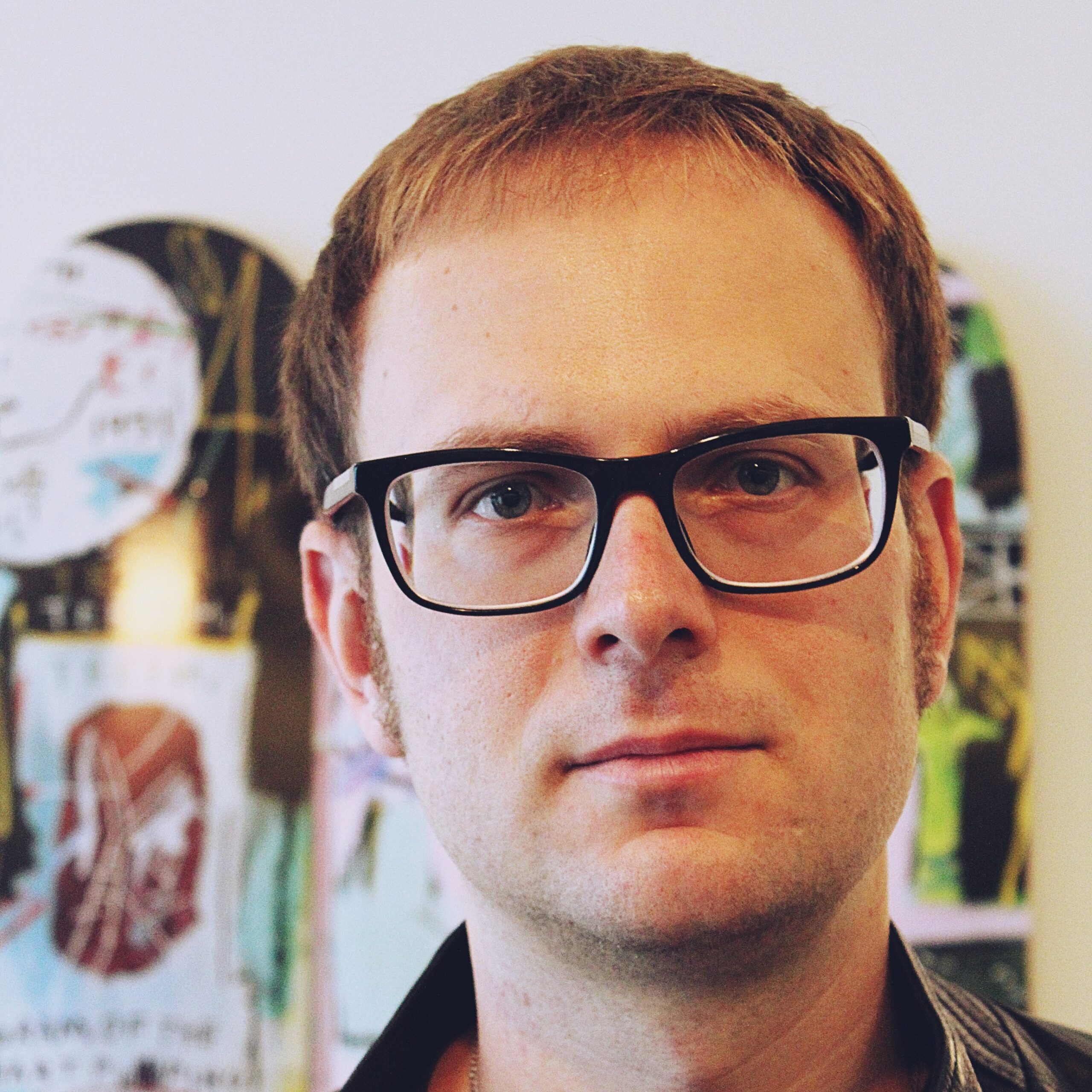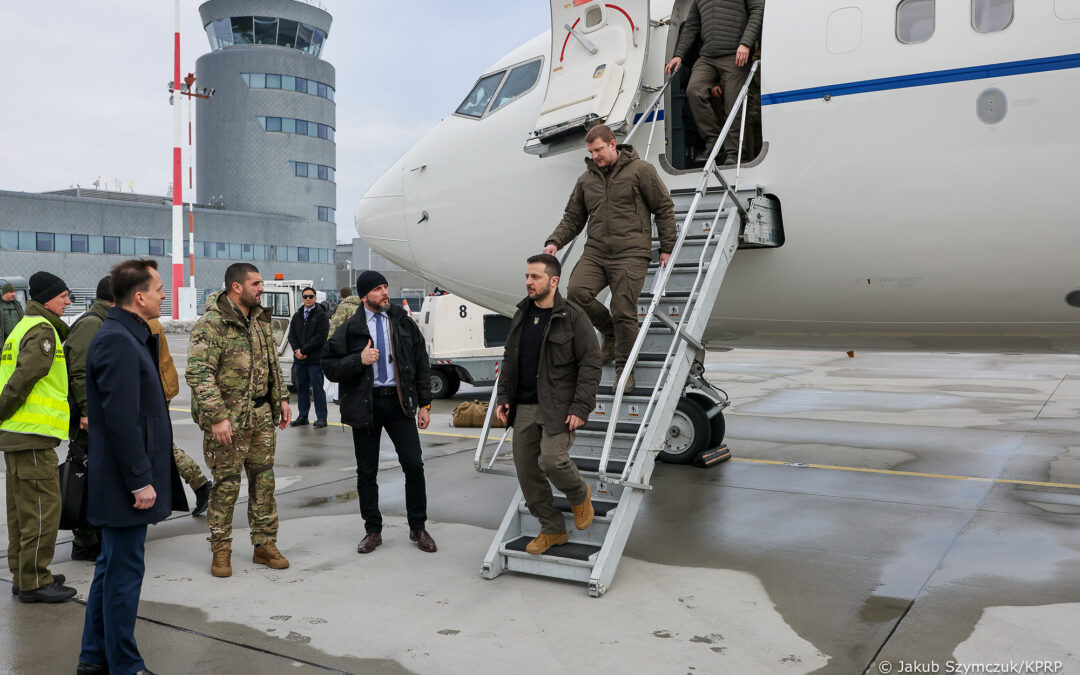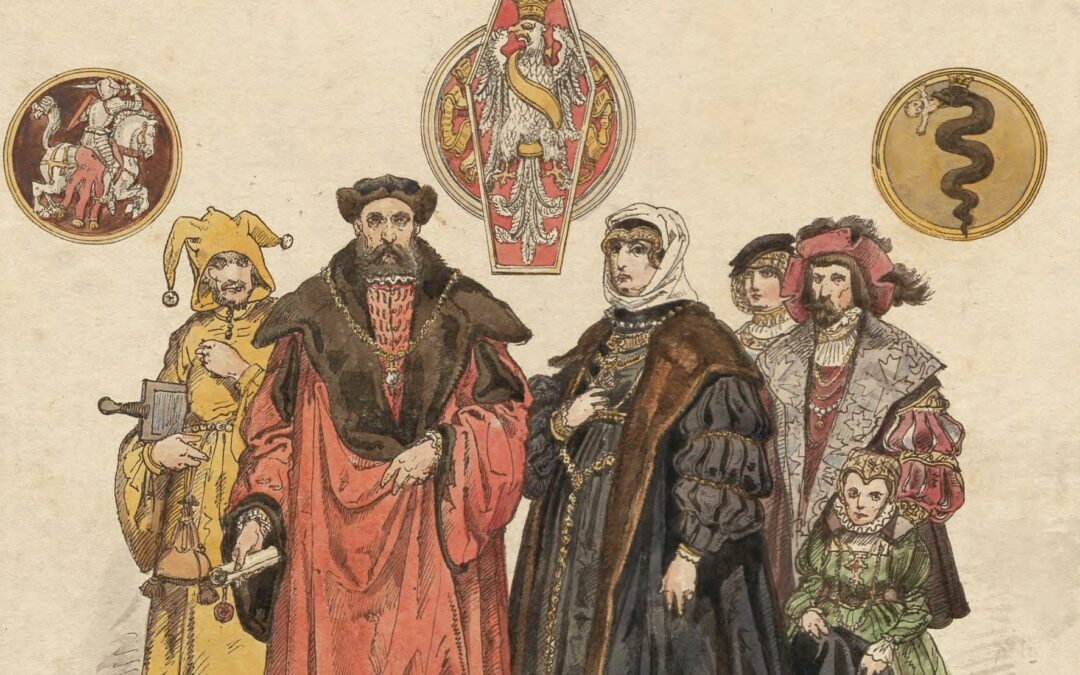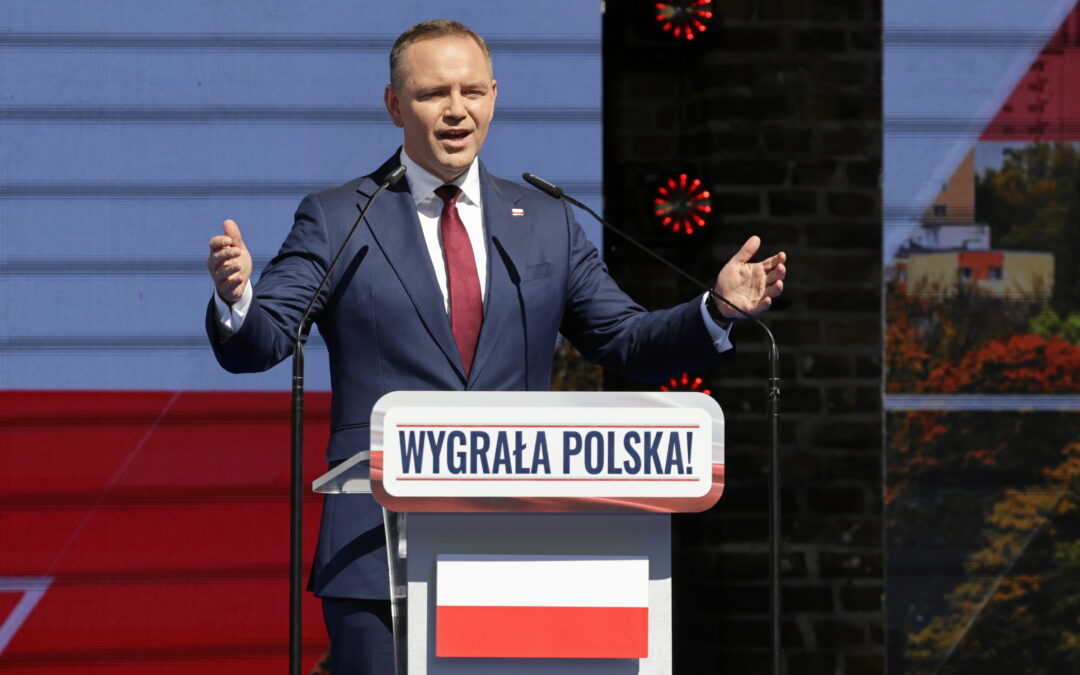By Filip Mazurczak
Unlike most territories that fell under German occupation during World War Two, Poland never had a collaborationist government. Nazi ideology saw Slavic Poles as subhumans, while Polish resistance to the occupation was widespread.
However, the Third Reich did seek to create a collaborationist movement among the Gorals, or Highlanders, a group native to Poland’s southern Tatra mountains.
Although the results of this policy were rather modest, the Goralenvolk, as the Nazis named them, have been a source of contention in Poland, a country that prides itself on its resistance to German occupation.
A new Polish historical drama about the issue, White Courage (Biała Odwaga), has sparked controversy and renewed debate. Yet its artistic mediocrity means the film is unlikely to have a long-term impact.
The Goralenvolk
The German occupation of Poland from 1939 to 1945 was exceptionally brutal. In addition to three million murdered Polish Jews, at least two million ethnic Poles were killed through mass executions, in concentration camps, or during the pacification of villages.
However, the Germans did not treat all Poles equally. Those who could demonstrate German ancestry, however dubious, could apply for the status of Volksdeutsche, ethnic Germans living outside the pre-1939 Reich.
While considered traitors by most of their countrymen, the Volksdeutsche were granted privileges, although this came at the price of being eligible for conscription in the Wehrmacht.
Historians have unearthed growing evidence of the Polish so-called Blue Police's involvement in war crimes during Germany's WW2 occupation, in particular in relation to the Holocaust.
Yet such findings require nuance and context, writes Filip Mazurczak https://t.co/wM4pmn6jR6
— Notes from Poland 🇵🇱 (@notesfrompoland) November 17, 2023
Another form of collaboration was that between the Germans and some Goral highlanders of the Podhale region in the Tatra mountains that run along the present-day border with Slovakia.
The Goralenvolk, as they were known, grew from an odd marriage (or, more accurately, fling) between Polish and German pseudo-science.
In 1928, University of Warsaw archaeologist Włodzimierz Antoniewicz published a book in which he argued that certain Goral decorative motifs evoked those of the Goths. He cited this as evidence that during the Barbarian invasions of the fifth century, a certain number of Goths found shelter in the Tatra basin and Spisz region.
This work piqued the interest of the Third Reich’s racial pseudo-scientists, who concurred that a cross motif which the Gorals had traditionally carved on roof beams and doors for centuries bore an uncanny resemblance to the swastika.
Meanwhile, some villages in Podhale – for instance, Waksmund, Murzasichle, and Grywałd – had distinctly German-sounding names.
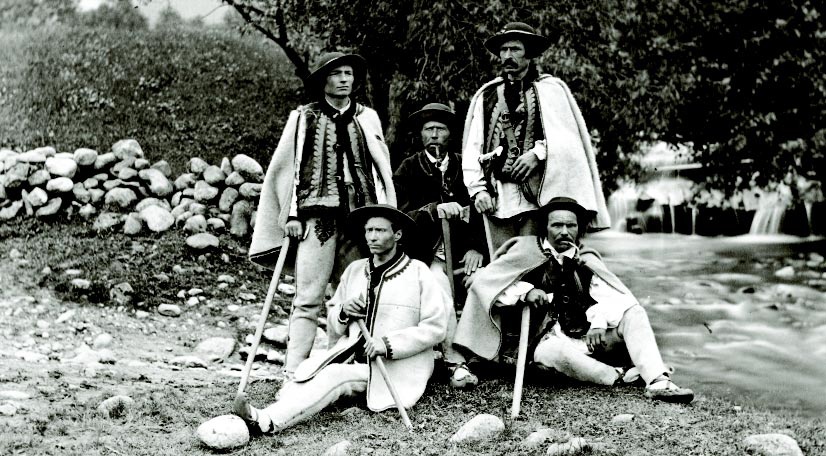
Gorals in traditional garb (1877)
After the German conquest of Poland in the autumn of 1939, Goral activist Henryk Szatkowski and Witalis Wieder, a reserve officer in the Polish Army and Abwehr agent living in Zakopane, a town in Podhale, successfully tried convincing the occupiers to give the local highlanders a privileged status.
The occupying administration quickly greenlit their idea. On 7 November 1939, just one day after the SS had arrested 184 professors from Kraków universities and deported them to concentration camps, a Goral delegation headed by Wacław Krzeptowski, chairman of the agrarian People’s Party in Nowy Targ county and the leader of peasants’ protests in the 1930s, greeted Hans Frank, who, as governor general of the occupied Polish lands would oversee the butchering of millions.
Krzeptowski was later appointed head of the Goralisches Komitee, which was launched in 1942. Formally, the organisation was intended to promote Goral culture, increase industrial production, and eliminate alcoholism and illiteracy; in practice, it tried to uproot the Gorals’ culture and make them loyal, Germanised subjects of the Reich.
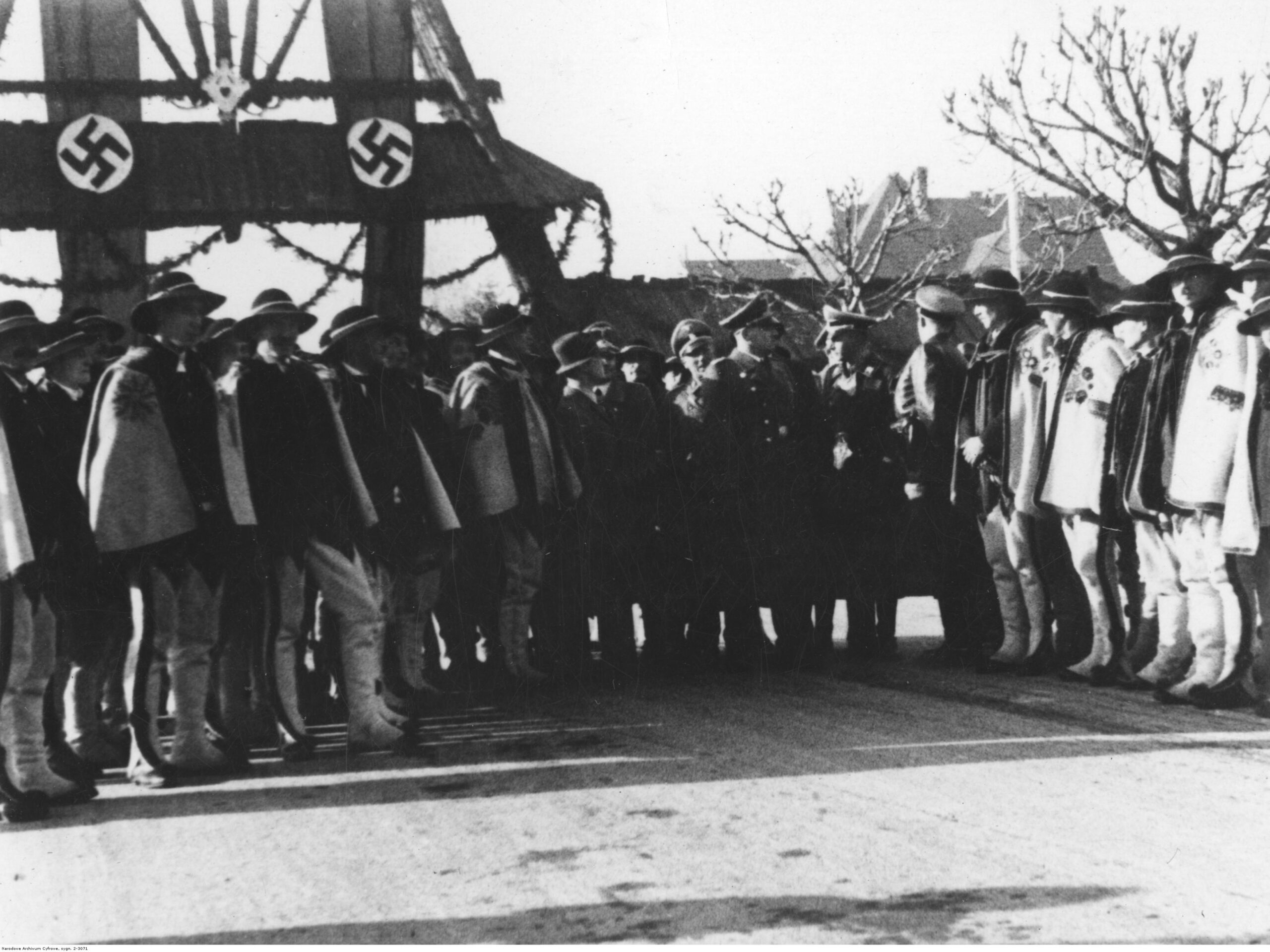
Hans Frank in Zakopane, November 1939
A Collaborationist Flop?
In 1940, the German occupiers held a census in Nowy Targ county. Apart from declaring themselves as Germans or Poles, locals could declare “Goral” nationality, although only 18% did.
The Gorals were given the opportunity to receive special Kennkarte, or identification documents, with a “G” on the upper right-hand corner. Although Gorals who refused such a status often faced threats of repression, the results were much more modest than either the Germans or Krzeptowski’s committee had hoped: less than one fifth of the 170,000 or so inhabitants of Nowy Targ county applied.
Meanwhile, the Nazis started a German-language vocational school, Goralische Berufschule für Volkskunst, intended to Germanise the Gorals and turn them into productive and loyal cogs in the Reich’s economy. However, not a single student enrolled.
The Polish underground resistance also immediately responded to the highlander quislings.
In 1942, the Home Army, the main branch of the Polish armed resistance to German occupation, formed the Tatra Confederation, whose main objective was to eliminate Krzeptowski and other traitors. On 20 January 1945, eight days before the Red Army “liberated” Nowy Targ, Krzeptowski was sentenced to death and hanged from a tree by the Home Army.
Poland today marks the 80th anniversary of the formation of the Home Army, a resistance movement that emerged during the Nazi-German occupation and which is believed to have been the largest such underground force in Europe https://t.co/9sKsfVskrg
— Notes from Poland 🇵🇱 (@notesfrompoland) February 14, 2022
It should be emphasised that the Goralenvolk did not participate in war crimes, as attempts at creating a Goral legion of the SS whose members would be employed as concentration camp guards were an utter failure.
An ambitious propaganda campaign was held throughout Podhale, promising recruits higher food rations (at a time when the vast majority of Poles under German occupation lived in dire poverty), exemption from being conscripted as slave labourers in Germany (the fate of 1.5 million Poles during the war), and amnesty for their relatives in prison and concentration camps.
Despite this, only about 300 Gorals enlisted. When they were sent to be trained as concentration camp guards, all but twelve deserted and the unit was disbanded.
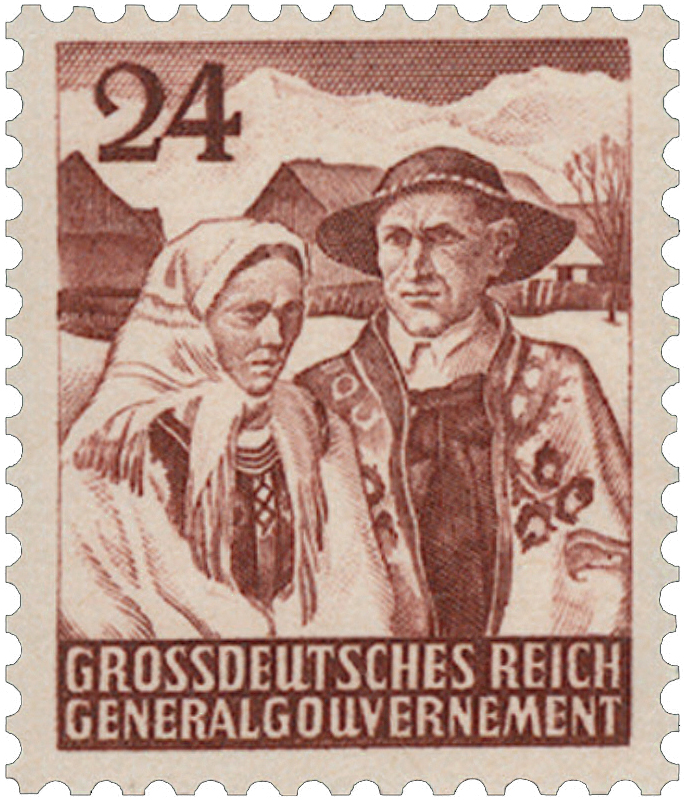
Stamp from German-occupied Poland featuring an image of Gorals (1944)
A controversial new film
As far back as 2021, the Podhale Association (Związek Podhalan) issued a letter of protest to then culture minister Piotr Gliński in response to his ministry’s granting of funds for a film, then at the pre-production stage, about the Goralenvolk to be directed by Marcin Koszałka and titled Biała odwaga (White Courage).
They even received support from the then justice minister, Zbigniew Ziobro, head of a junior party in the ruling coalition, who criticised the culture ministry for “financing artistic and historical provocations of the left”.
Yet the funding remained, and the film was released last month. That led the Podhale Association to issue another protest. It did not dispute specific facts in the film, and indeed declared that “no one in Podhale wants to defend traitors” who had collaborated with the Germans. But the association argued that there were such collaborators all around Poland and that the film created a “caricature”.
Związek Podhalan już obejrzał film "Biała odwaga". "Pokazano nie pazerność górali, ale pazerność Polaków" #wyborcza https://t.co/jj8w6gNPjt
— Gazeta Wyborcza.pl (@gazeta_wyborcza) March 14, 2024
The main protagonist of White Courage is Jędrek Zawrat, a daredevil mountain climber. Although Krzeptowski was not an alpinist, he is clearly the model for Zawrat. Eventually, Zawrat befriends a German fellow hiking enthusiast, Wolfram von Kamitz, clearly Zawrat’s Witalis Wieder. When climbing, they boost their strength by drinking a solution called “White Courage” intended to boost endurance.
Mountain climbing is not Kamitz’s only passion: he is fascinated by Nazi racial theories and has taken a particular interest in Tibet, from where the Aryan “master race” perhaps originates (reminiscent of Heinrich Himmler’s Himalayan fascinations; the swastika, after all, is a Sanskrit symbol).
The film depicts multiple collaborationist practices. Gorals are shown taking over the businesses of Jews who had been deported to death camps; a group of Goral children greets an unnamed high-ranking German official, presumably Frank; and, most controversially, a Goral SS legion wearing black uniforms with swastikas is depicted.
In an article titled “‘Góralszczyzna’ po niemiecku” (“‘Goral Culture’ in German”) for right-wing weekly Do Rzeczy, historian Maciej Korkuć lambasted the fictional uniforms as well as the fact that the Polish underground’s actions against the collaborators are barely mentioned.
Meanwhile, an article on the film in the liberal Catholic weekly Tygodnik Powszechny quotes the historian Dawid Golik, who refused to serve as a consultant for the film and also criticised the fictional uniforms and the lack of proportion, noting that only about 250 members of the Goralisches Komitee qualify to be categorised as collaborators.
Podhale w płomieniach: nowy obraz Marcina Koszałki opowiada historię, którą wielu zamiotłoby pod dywan lub zamknęło w pracach historyków. https://t.co/NvgCaH3MSC
— Tygodnik Powszechny (@tygodnik) March 22, 2024
The first teaser poster for White Courage features a photograph of a man in traditional Goral garb, recognisable to any Pole, with an SS jacket complete with a large swastika pin. This invites the conclusion that the entire purpose of the SS uniforms was hyperbole-driven marketing.
While the film does depict Zawrat asking his legion to desert and burn their uniforms, and while the director has every right to focus on collaborators if he wishes, for a viewer not steeped in the history of the Goralenvolk (which even most Poles know relatively little about), the lack of a sense of proportion regarding Goral collaborators and resisters as well as the absolutely fictional uniforms could give a distorted view of the history of both Polish and Goral wartime history.
However, it seems unlikely the film will receive international distribution. Apart from being only a modest box office success so far, it is so steeped in Goral culture and Polish history that it will be unintelligible to international audiences.
Furthermore, apart from the spectacular shots of the Tatras and exciting climbing sequences, artistically White Courage is no triumph. The film is sparse on character development; audiences do not learn much about Zawrat’s motives, nor those of other Goral collaborators.
White Courage is a film that seems to be built around creating controversy and outrageous headlines rather than honestly presenting and encouraging consideration of a complex but still little-known historical episode.
The Jews who worked as police in the WWII ghettos have one of the most difficult legacies in the history of the Holocaust, having been both collaborators and victims.
We speak with historian Katarzyna Person about her award-winning research on the subject https://t.co/oPGQIIETs7
— Notes from Poland 🇵🇱 (@notesfrompoland) July 16, 2020

Notes from Poland is run by a small editorial team and published by an independent, non-profit foundation that is funded through donations from our readers. We cannot do what we do without your support.
Main image credit: Monolith (press materials)
